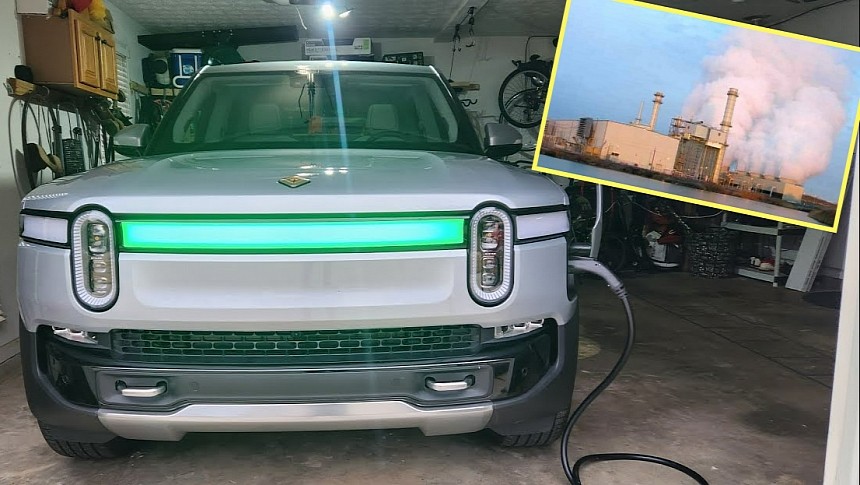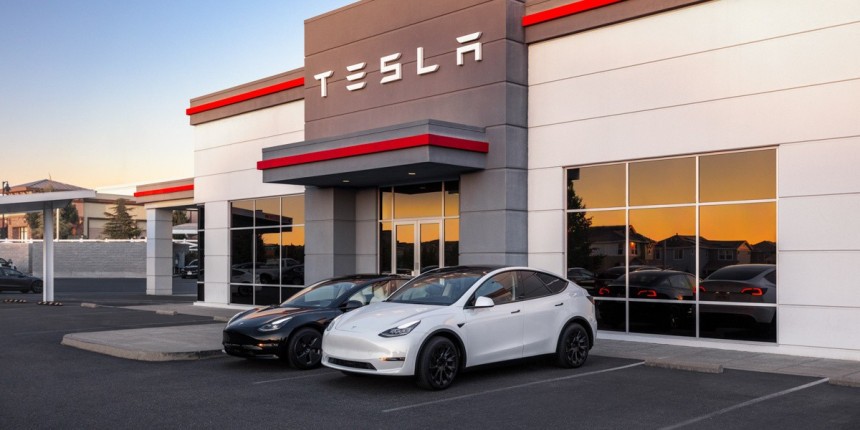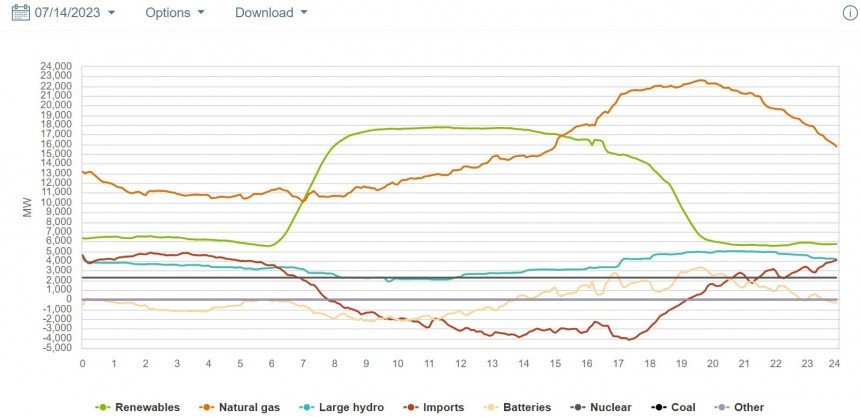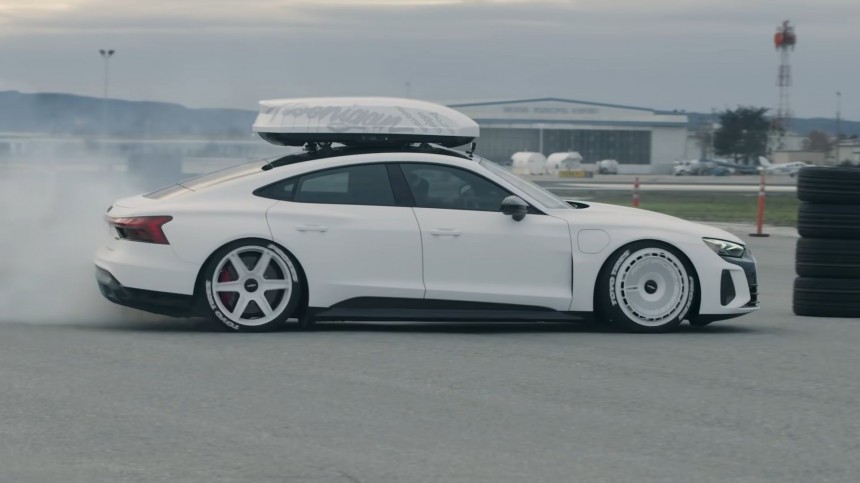California, the world's eighth-largest economy, is undoubtedly a leader in the electric vehicle space. It's also one of the states with the most progressive environmental policies. But buying an EV and using it daily might not be as beneficial as you think. Here's where "dirty electricity" comes into play and diminishes your green efforts.
The way forward is clear – zero-tailpipe emission vehicles are our future. Multiple studies have shown that ending reliance on fossil fuels is a good thing for slowing down global warming and ending cartel-like practices that control energy prices worldwide. Artificially limiting supply to keep some companies profitable at the detriment of millions of consumers is a shady practice that must stop.
The auto industry is finally joining Tesla in popularizing the battery-electric vehicle (BEV), and many governments are rushing the transition to clean powertrains through incentives and, sadly, bans. But such a monumental change was never going to be easy.
Even if we have to sacrifice some places like Thacker Pass for minerals needed in batteries, it's better to follow this plan because prominent actors are already involved in overhauling the way we relate to cars. Let's just hope that OPEC+ won't reappear under another name to control critical mineral production.
Californians have already decided that they want EVs to become mainstream. So far this year, the Tesla Model 3 and Model Y are the top-selling cars in the Golden State. Besides that, over 1.5 million all-electric vehicles have reached their owners this year.
The best thing about this trend is that with nearly every new EV, a polluting internal combustion engine (ICE) machine is either off the streets or exported elsewhere. Thus, local communities get to breathe better air and contribute to the fight against global warming.
But that's not the whole picture.
However, the energy sources aren't as clean as you think. Even though California has made significant progress in diversifying away from fossil fuels, electricity still relies heavily on natural gas. Just two days ago, renewables took over as the primary energy source. But just for approximately eight hours. That's according to data from the California Independent System Operator (CAISO), the state's grid manager.
In California, renewable energy comprises solar, wind, geothermal, biomass, biogas, and small hydroelectric power plants. But these sources are only available during the day, mainly because solar energy represents around 84% of renewables. When the sun isn't shining, other sources are needed. As such, natural gas steps in to cover demand. The same source shows that on July 14, over 95% of the CO2 emitted for electricity production came from natural gas use.
Most people charge their EVs overnight at home to avoid peak electricity prices. Thus, they consume electricity produced by burning natural gas, which comprises methane, ethane, butane, propane, and other gases. The good is that burning natural gas at a power plant is far cleaner and more efficient than gasoline used by an internal combustion engine.
But EV use also means more microplastics being released into our air. These vehicles are generally heavier than ICE-powered ones and may burn through rubber quicker. Tires are a major source of pollution.
However, the motors installed on virtually all existing BEVs are capable of regenerative braking. This means the driver doesn't have to use the brakes as often as with an ICE, which is a net positive in the fight against global warming. Brake dust amounts to approximately 20% of fine particulate matter pollution, which is a leading cause of various health issues.
Also, manufacturers should figure out a way in which EVs won't be easily totaled in case of a minor crash. Buying a whole new car is not very environmentally friendly.
Considering all the above, no matter how someone may try and frame it, EVs are good for the environment. Once we figure out how to ditch natural gas and coal burning to produce energy, our commuting appliances will only amplify their usefulness in the fight against climate change.
Finally, Californians who haven't switched to EVs pay some of the highest gas prices in the country. Still, they'll have to adjust soon because the Golden State decided to phase out the internal combustion engine by 2035, with some small exceptions.
The auto industry is finally joining Tesla in popularizing the battery-electric vehicle (BEV), and many governments are rushing the transition to clean powertrains through incentives and, sadly, bans. But such a monumental change was never going to be easy.
Even if we have to sacrifice some places like Thacker Pass for minerals needed in batteries, it's better to follow this plan because prominent actors are already involved in overhauling the way we relate to cars. Let's just hope that OPEC+ won't reappear under another name to control critical mineral production.
Californians have already decided that they want EVs to become mainstream. So far this year, the Tesla Model 3 and Model Y are the top-selling cars in the Golden State. Besides that, over 1.5 million all-electric vehicles have reached their owners this year.
But that's not the whole picture.
Nobody's getting a pass
BEVs need to be charged. Most owners prefer to do it at home because it's cheaper than a DC fast charger and is more beneficial for the battery's life to avoid often replenishing it at high power rates. Typically, this happens after people return from work. The vehicles are plugged in overnight, and the next day starts with "a full tank."However, the energy sources aren't as clean as you think. Even though California has made significant progress in diversifying away from fossil fuels, electricity still relies heavily on natural gas. Just two days ago, renewables took over as the primary energy source. But just for approximately eight hours. That's according to data from the California Independent System Operator (CAISO), the state's grid manager.
Most people charge their EVs overnight at home to avoid peak electricity prices. Thus, they consume electricity produced by burning natural gas, which comprises methane, ethane, butane, propane, and other gases. The good is that burning natural gas at a power plant is far cleaner and more efficient than gasoline used by an internal combustion engine.
Never-ending challenges
But there are other problems regarding EVs and their green impact on the environment. A study has shown that, on average, an all-electric car will have the same carbon footprint as an ICE-powered one only after 21,000 miles of driving. That's because of battery manufacturing and tricky supply chains, which the Inflation Reduction Act (IRA) partly tackles.But EV use also means more microplastics being released into our air. These vehicles are generally heavier than ICE-powered ones and may burn through rubber quicker. Tires are a major source of pollution.
Also, manufacturers should figure out a way in which EVs won't be easily totaled in case of a minor crash. Buying a whole new car is not very environmentally friendly.
Considering all the above, no matter how someone may try and frame it, EVs are good for the environment. Once we figure out how to ditch natural gas and coal burning to produce energy, our commuting appliances will only amplify their usefulness in the fight against climate change.
Finally, Californians who haven't switched to EVs pay some of the highest gas prices in the country. Still, they'll have to adjust soon because the Golden State decided to phase out the internal combustion engine by 2035, with some small exceptions.






















